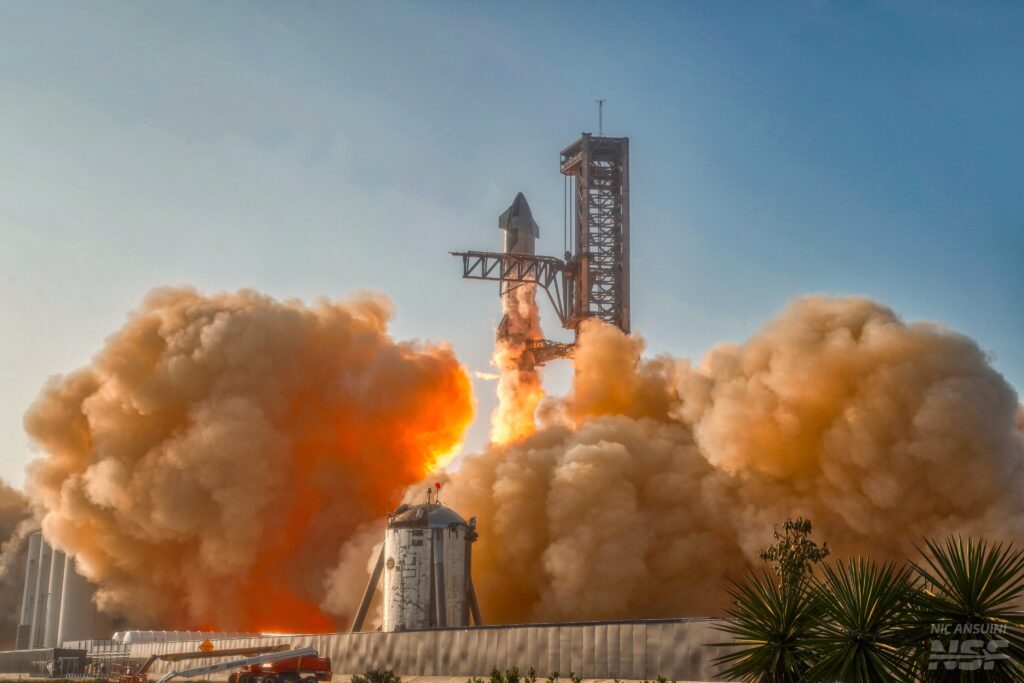On April 20, SpaceX carried out the long-awaited first orbital test of the new Starship space transport system. The giant rocket managed to break away from the launch pad and start ascent. Unfortunately, in the future, Starship got out of control, which led to its destruction.

At the moment, we do not yet have complete information about what exactly went wrong during the test. But, judging by the broadcast footage, at the time of takeoff, only 27 of the 33 Raptor engines were working on the Super Heavy stage. Nevertheless, the rocket continued to gain altitude, successfully passing the Max-Q section of the greatest aerodynamic drag.
Liftoff of Starship! pic.twitter.com/4t8mRP37Gp
— SpaceX (@SpaceX) April 20, 2023
The next step was to separate Super Heavy from Starship and perform a U-turn that would direct the stage back to the launch point. Then SpaceX planned to flood the stage in the Gulf of Mexico 32 km from the coast. However, due to the large number of inactive engines, as well as the fact that they were located in one part of the stage, the Starship began to deviate from the course. After overcoming the 30 km mark, the huge rocket spun, after which it literally performed several 360-degree turns.

Surprisingly, despite all the celestial acrobatics, Starship retained its structural integrity, its engines continued to work, and the on-board computer tried to correct the situation. But at some point, Starship, nevertheless, exploded. Most likely, it was undermined by on-board automation in order to avoid the risks associated with the fall of an out-of-control rocket. In total, the Starship flight lasted three minutes.
FTS abort. Well done Booster 7 (and Ship 24)! That was still a big win. Launch site is fine and got a lot of first stage data!
Next up, Booster 9!https://t.co/npUj2AHByW pic.twitter.com/KRxBwsLlKq
— Chris Bergin – NSF (@NASASpaceflight) April 20, 2023
Recall that even before the test, Elon Musk was very cautious about his results, giving only a 50% chance of success. Nevertheless, despite the fireworks in the sky over Texas, in general, the test showed a number of positive moments for SpaceX. Starship successfully overcame Max-Q and proved the possibility of flying with six disabled engines. Moreover, it (albeit unplanned) made a number of seemingly impossible maneuvers for aerospace technology, which would surely destroy any other rocket, once again demonstrating the strength of its design.
All this gives a good chance that the next Starship test will end with a more positive result. So far, SpaceX has not announced when we can wait for the second launch of the giant rocket.
Follow us on Twitter to get the most interesting space news in time
https://twitter.com/ust_magazine

